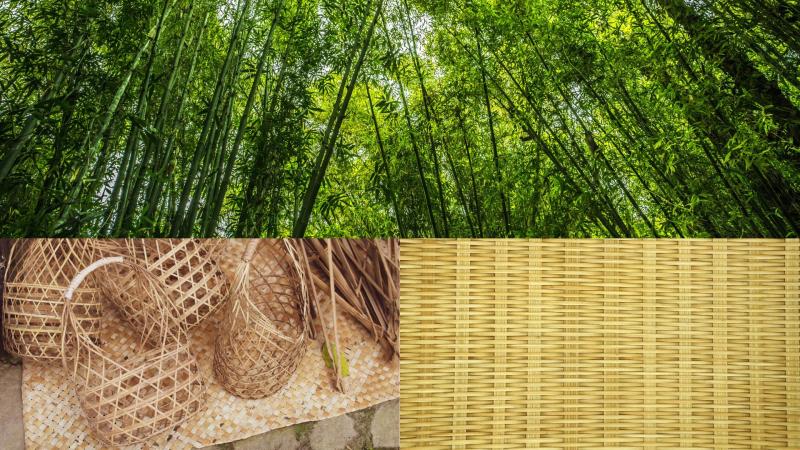
Bamboo, a remarkable plant, offers numerous benefits to humans and the ecosystem. India is home to 136 species of bamboo, with a significant number of these being indigenous. The Northeast states, Western Ghats, and the Andaman & Nicobar Islands are particularly rich in bamboo diversity and abundance. The fast-growing grass serves as a building material and a food source, and, before being harvested, it is home to a thriving ecosystem that functions as a carbon sink. Bamboo usage has been steadily increasing, giving rise to new plantations and mechanised farms.
A new study from the Indian Institute of Remote Sensing, Indian Space Research Organisation, ICFRE - Rain Forest Research Institute, Jorhat, University of Helsinki, Finland and Assam University, Silchar, has now conducted a detailed survey of the bamboos of Dima Hasao district of Assam to map bamboo forests and understand what makes them grow.
Did You Know? Bamboo is actually a type of grass, not a tree. Some bamboo species can grow incredibly fast – up to 3 feet in a single day, and Bamboo forests can absorb more carbon dioxide than many tree forests. |
he team used satellite images from Sentinel-2, which capture different parts of the light spectrum, including infrared. They used images from both March (before the monsoon) and November (after the monsoon) of 2022, as bamboo appears differently in satellite images depending on the season. Using data from both times helped them obtain a clearer picture. They also used topographic data, which shows the elevation, slope, and direction of the land.
To analyse the data, they employed three different machine learning classifiers: Random Forest (RF), Support Vector Machine (SVM), and Artificial Neural Network (ANN). These are computer programs that learn from data to make predictions. The Random Forest classifier was the most accurate, providing the best map of where the bamboo is located. The team also utilised Landsat satellite data and a tool called LandTrendr to create a map illustrating areas of disturbance over a 25-year period, from 1995 to 2020. This helped them see how shifting cultivation has impacted the landscape and where bamboo has regrown.
The study found that a combination of human activities and environmental factors heavily influences bamboo in the region. They found that approximately 78.9% of the areas where bamboo grows have experienced significant disturbance, primarily due to a traditional farming practice known as shifting cultivation, also referred to as Jhuming. This method involves clearing land, often by burning, to prepare it for crops. While it may seem destructive, the study suggests that these disturbances, along with natural climate conditions, actually create conditions that promote bamboo's flourishing.
The researchers also found that the most important factor influencing where bamboo grows is a factor called vapour pressure deficit (VPD). VPD is a measure of the dryness of the air and the amount of moisture it contains. Bamboo prefers areas with higher humidity, which corresponds to lower VPD. Other essential factors identified were rainfall and soil temperature.
This study presents a high-resolution map of bamboo distribution in Northeast India, a region renowned for its rich diversity of bamboo. By combining data from different seasons and using machine learning techniques, this research provides a much more accurate picture of bamboo distribution. The study also highlights the importance of specific spectral bands, such as the short-wave infrared (SWIR) bands, and vegetation indices like NDVIre2, in identifying bamboo, which could also aid in identifying other types of vegetation.
The findings could guide how we manage our forests and plan for the future, especially in the face of climate change. Bamboo's ability to thrive in disturbed areas and its role in carbon sequestration make it a valuable resource for conservation and climate adaptation. By understanding the factors that drive bamboo distribution, policymakers and forest managers can make better decisions about land use, conservation planning, and even support livelihoods that depend on bamboo.
This article was written with the help of generative AI and edited by an editor at Research Matters.






